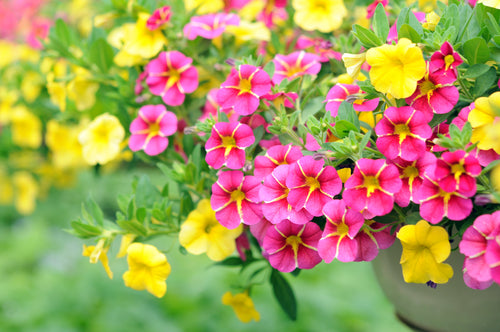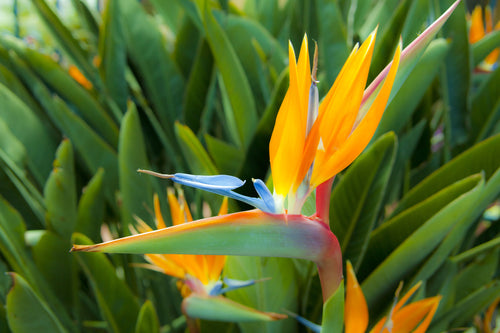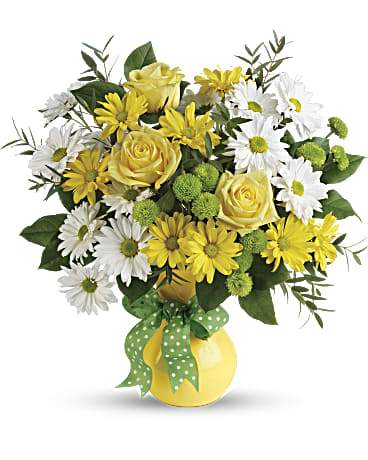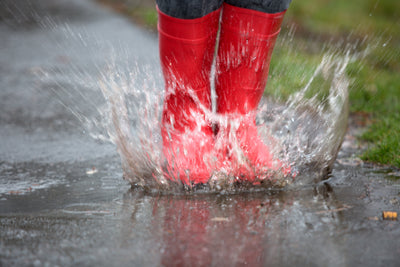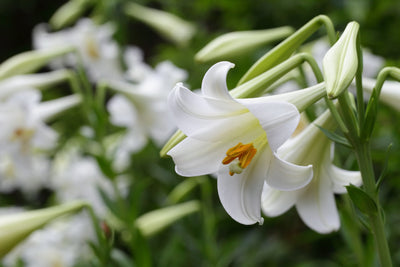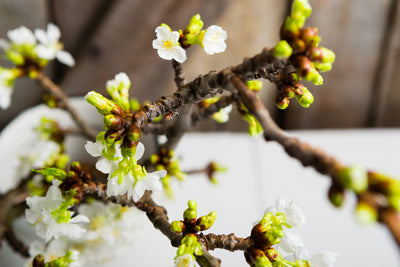Adult beetles feed on over 400 species of broadleaved plants but they prefer about 50 species. Adults skeletonize leafs, eating the tissue between the veins. Attacked leaves are laced and soon wither and die. Beetles also enjoy eating flower bulbs and fruit.
Natural/Organic controls for Japanese Beetles
Adult beetles prefer to lay their eggs in short grass. Cut your lawns no shorter than 2 ½ inches, Beetles will lay their eggs elsewhere. Mowing tall gives the grasses the ability to develop a strong root system.
Cut back on your summer watering. Moist conditions promote the hatching of newly laid eggs by the beetles.
Japanese Beetle traps can attract beetles to your yard from a ½ block away. Avoid using traps unless you're monitoring beetle populations in an orchard or commercial area.
Hand pick the beetles and toss them into a bucket of soapy water, a shop vacuum also works well. The more beetles you have, the more you'll get. They sense other feeding beetles by pheromones. Beetles can also detect damaged diseased plants or rotting fruits and vegetables. Removing the beetles will decrease damage to plant materials and quantities that will migrate to your yard.
Dr. Earth Pro-Active™ Home & Garden Insect Spray
Formulated with essential oils and garlic extract to knock down and kill insects quickly, the results are apparent from immediately to several minutes. Dr. Earth Pro-Active™ works to block Octopamine neuroreceptors. Octopamine is a chemical neurotransmitter that controls body movement and metabolism in insects and mites. The ingredients in Dr.Earth Pro-Active™ interefere with the transmission of Octopamine signals throughout an insect's body. The intereference of these signals leads to metabolic toxicity, immobilization and ultimately death. Garlic extract has been proven to repel insects for several weeks or longer.
Bon-Neem Insecticidal Soap By Bonide
Potassium Salt of fatty acids derived from Neem seed oil 25%
Derived from the botanical oils of Neem tree seeds. Treat ornamental trees, shrubs, flowers, bedding plants & vegetables.
Japanese Beetle Killer RTU by Bonide
Pyrethins - 0.02%
Piperonyl Butoxide - 0.20%
Natural pyrethrum for quick and easy kill of Japanese Beetles on vegetables, flowers, ornamentals, trees and shrubs.
Conventional Controls
Eight Insect Control by Bonide
Permethrin - 2.5%
Use on vegetables, fruits, flowers, roses, ornamentals, lawns, trees and shrubs. Keeps working for up to 4 weeks.
Triazicide Insect Killer Once & Done™ by Spectracide
Gamma-Cyhalothrin - 0.25%
Use on vegetables, fruits, flowers, roses, ornamentals, lawns, trees and shrubs. Fast acting formula, kills on contact! Keeps working for up to 8 weeks.
Systemic Insect Control by Bonide
Acephate - 9.4%
Use on roses, flowers, ornamentals, shrubs and trees.
Beetle Killer by Bonide
Lamda-cyhalothrin - 0.5%
Lamda-cyhalothrin concentrate provides the punch in this new product to knock out even the toughest beetles, like Colorado Potato, Japanese, Mexican Bean, Asian Lady, Asian Longhorn and others. Low odor, non staining formula quickly kills and repels for up to 8 weeks. Great for vegetable and flower gardens (treats up to 16000 sq. ft.), as well as trees, shrubs, turf & ornamentals. Comes with our "Twist and Shoot" adjustable sprayer to reach trees up to 25' tall.
Carefully read the directions on all the products listed above. Follow precautions and mixing instructions.
By eliminating some of the beetle population, hopefully there will be less grubs to deal with. Female beetles can lay 40 to 60 eggs a piece.
Right now Japanese Beetles are pupating into beetles. They've done some turf damage as grubs and as beetles they consume plant materials. Porphia Japonica are a brilliant metallic green color, oval in shape, about ⅝" long by ¼" wide. The wing covers are copper brown and the abdomen has a row of five tufts of white hairs on each side. The males have a sharp tip on the foreleg tibia while the female has a long rounded tip.
When beetles emerge in June, they begin feeding on the growing plants and then move to tree leaves. An adults' life span is 30-45 days. Before they die females lay eggs which hatch into the notorious lawn grub.





